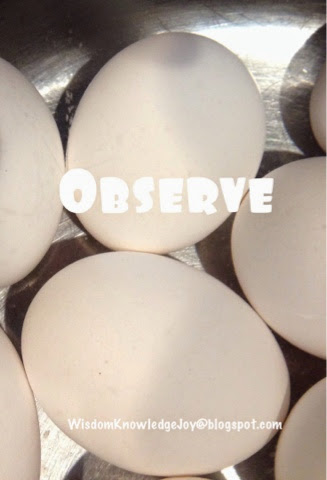"Hey Mom, Look!" Have I mentioned that is my favorite phrase? Well, at least when it means "Look what I noticed," not "Watch me break my leg."
These balloons were filled with plain old air, not helium. However, they were floating up, and then falling down again in a kind of circular pattern. It was really quite mesmerizing. When I asked my children why this was happening, they quickly identified that the air particles from the vent were hitting the balloon and making it move. This is great, because understanding that air is made of molecules that can have this impact is one way to prove that gas can have mass, and therefore really is matter. Most people today readily believe this, but it is not actually all that intuitive, and has been highly debated in other times.
T-Rex was able to give me a clear explanation of the major forces. Gravity pulls the balloons down, the air molecules push them up. When the force of the air molecules is greater than gravity, the balloon moves up. When the force of the air molecules is smaller than the force of gravity, the balloons move down.
In terms of energy, there is a transfer of kinetic (moving) energy from the air molecules to the balloon. As the balloon moves up it trades its kinetic energy for potential energy due to gravity. When it falls toward earth again it trades the potential energy for kinetic energy once again.
Next time you notice a moving object, stop and ask. Why is it moving? It can be a pretty interesting question.
The purpose of this Science Along the Way series is to help me, my children, and my readers stop and notice the amazing physical world in which we live every day. Thanks for reading!
This post "The Other Way to Make Balloons Float, by Christy McGuire, first appeared on WisdomKnowledgeJoy.






























